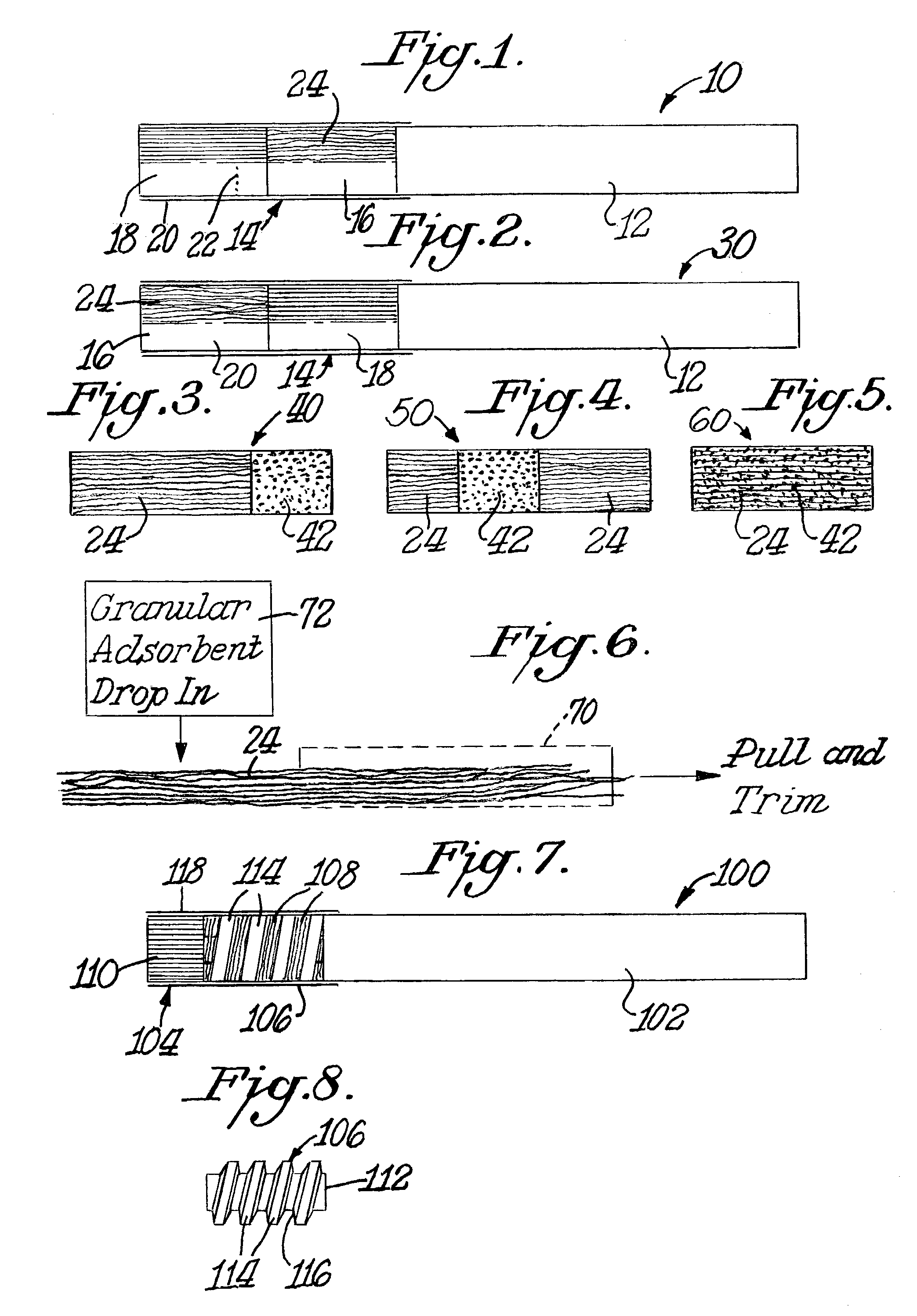Activated carbon fiber cigarette filter
- Summary
- Abstract
- Description
- Claims
- Application Information
AI Technical Summary
Benefits of technology
Problems solved by technology
Method used
Image
Examples
Embodiment Construction
[0025]Referring in more particularity to the drawings, FIG. 1 illustrates a cigarette 10 of the present invention comprising a tobacco rod 12 and a filter construction 14 including an activated carbon fiber filter section 16 and a cellulose acetate filter section 18. Tipping paper 20 is wrapped around the filter construction 14 and a portion of the adjacent tobacco rod 12 to hold the tobacco rod and filter construction together. The tipping paper has ventilation holes 22 for introducing air into mainstream tobacco smoke as the smoke is drawn through the filter. The location and number of ventilation holes may be varied depending on the performance characteristics desired in the final product.
[0026]The activated carbon fiber filter section 16 comprises a bundle of highly activated carbon fibers 24 that function to remove gas phase constituents in the cigarette smoke. The fibers have surface areas of approximately 1000 to 3000 square meters per gram, micropore volumes of approximately...
PUM
 Login to View More
Login to View More Abstract
Description
Claims
Application Information
 Login to View More
Login to View More - R&D
- Intellectual Property
- Life Sciences
- Materials
- Tech Scout
- Unparalleled Data Quality
- Higher Quality Content
- 60% Fewer Hallucinations
Browse by: Latest US Patents, China's latest patents, Technical Efficacy Thesaurus, Application Domain, Technology Topic, Popular Technical Reports.
© 2025 PatSnap. All rights reserved.Legal|Privacy policy|Modern Slavery Act Transparency Statement|Sitemap|About US| Contact US: help@patsnap.com


